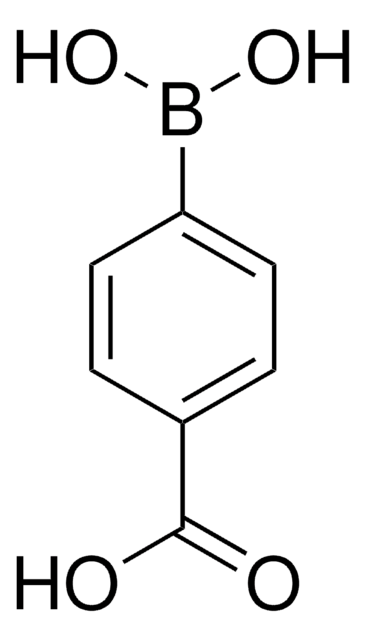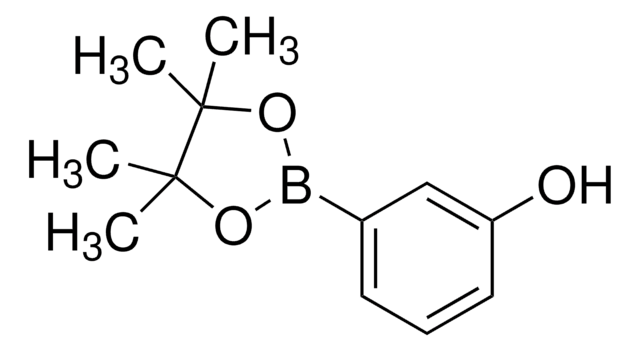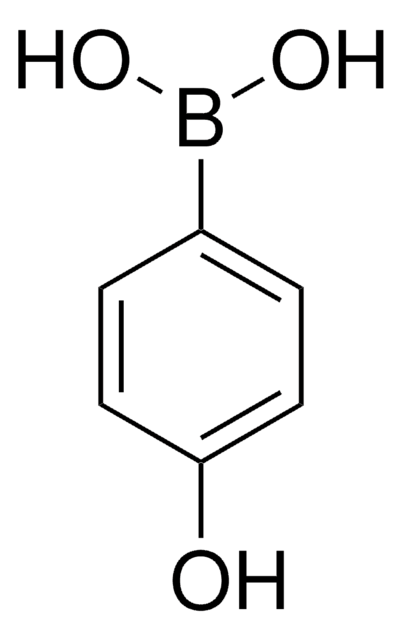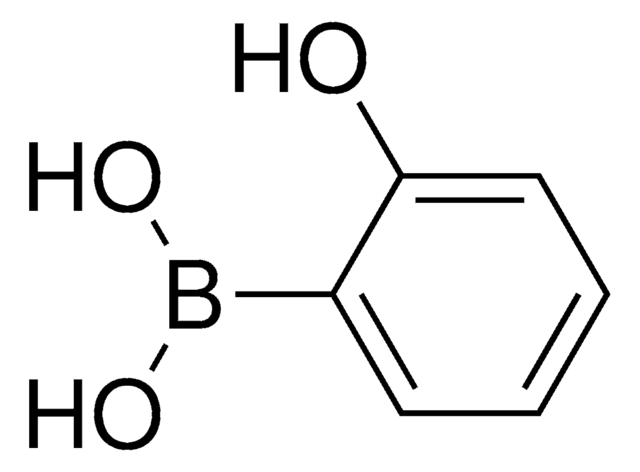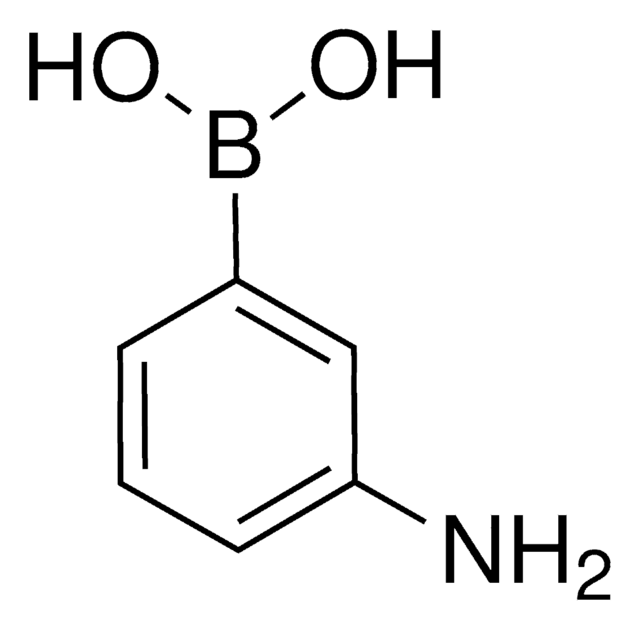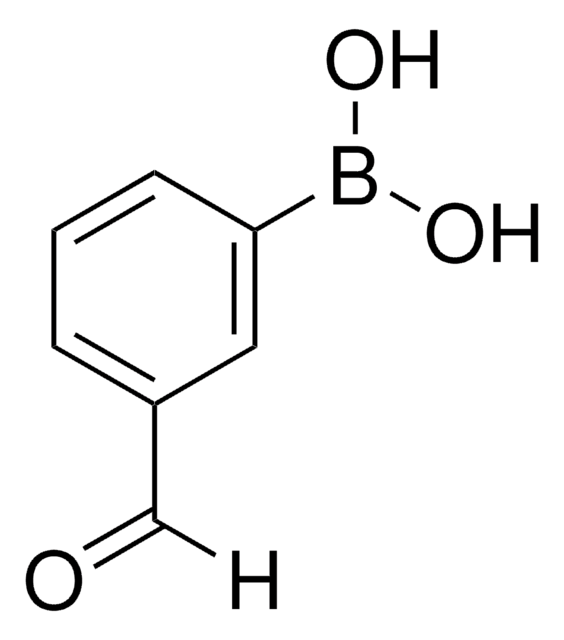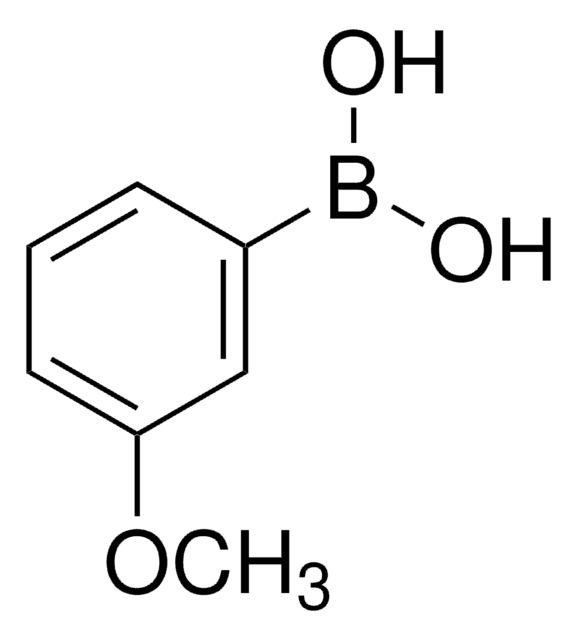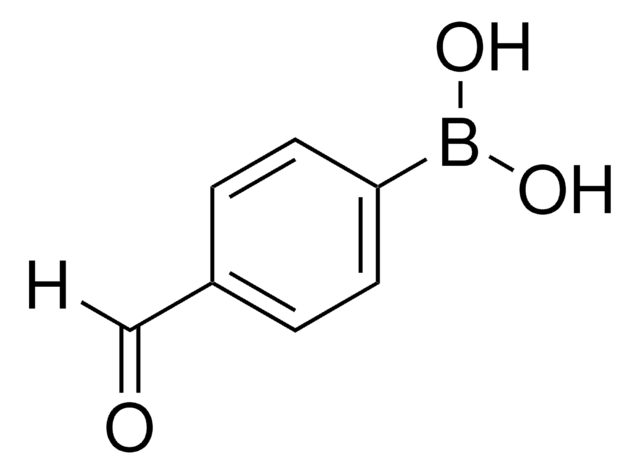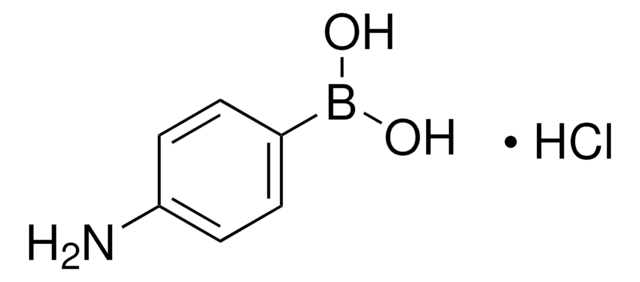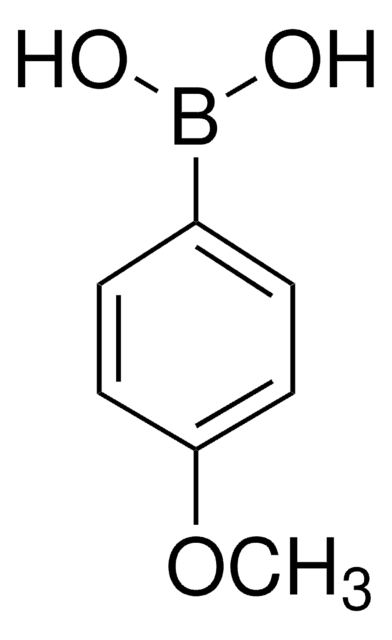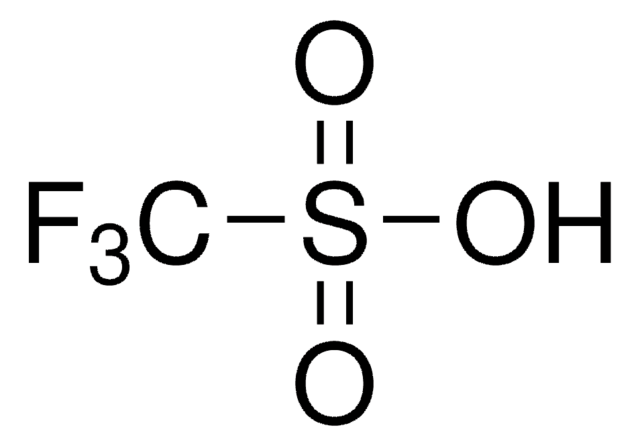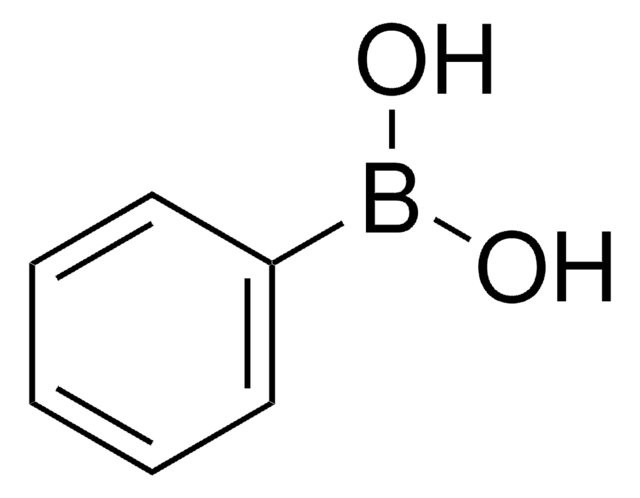523968
3-Hydroxyphenylboronic acid
≥95.0%
Sinonimo/i:
3-Hydroxybenzeneboronic acid, m-Hydroxybenzeneboronic acid
Autenticatiper visualizzare i prezzi riservati alla tua organizzazione & contrattuali
About This Item
Formula condensata:
HOC6H4B(OH)2
Numero CAS:
Peso molecolare:
137.93
Numero MDL:
Codice UNSPSC:
12352103
ID PubChem:
NACRES:
NA.22
Prodotti consigliati
Saggio
≥95.0%
Punto di fusione
210-213 °C (dec.) (lit.)
Stringa SMILE
OB(O)c1cccc(O)c1
InChI
1S/C6H7BO3/c8-6-3-1-2-5(4-6)7(9)10/h1-4,8-10H
WFWQWTPAPNEOFE-UHFFFAOYSA-N
Cerchi prodotti simili? Visita Guida al confronto tra prodotti
Applicazioni
3-Hydroxyphenylboronic acid (3-HPBA) can be used as a reagent:
- In Suzuki-Miyaura coupling reactions with aryl halides for the formation of C-C bond in the presence of Pd catalyst.
- To synthesize boron/nitrogen-doped polymer nano/microspheres by hydrothermal polymerization with formaldehyde and ammonia.
- To prepare carbon quantum dots based on 3-HPBA as selective fructose sensor.
- In the development of modified electrodes for electrochemical biosensors.
Nota a piè di pagina
Contains varying amounts of anhydride
Codice della classe di stoccaggio
11 - Combustible Solids
Classe di pericolosità dell'acqua (WGK)
WGK 3
Punto d’infiammabilità (°F)
Not applicable
Punto d’infiammabilità (°C)
Not applicable
Dispositivi di protezione individuale
Eyeshields, Gloves, type N95 (US)
Scegli una delle versioni più recenti:
Possiedi già questo prodotto?
I documenti relativi ai prodotti acquistati recentemente sono disponibili nell’Archivio dei documenti.
I clienti hanno visto anche
Synthesis of hyperbranched polythiophene with a controlled degree of branching via catalyst-transfer Suzuki-Miyaura coupling reaction
Segawa Y, et al.
Polym. Chem., 4(4), 1208-1215 (2013)
Diana M A Crista et al.
Journal of fluorescence, 29(1), 265-270 (2019-01-07)
The selective fluorescence sensing of fructose was achieved by fluorescence quenching of the emission of hydrothermal-synthesized carbon quantum dots prepared by 3-hydroxyphenylboronic acid. Quantification of fructose was possible in aqueous solutions with pH of 9 (Limit of Detection LOD and
Pierangelo Bellio et al.
Life sciences, 241, 117116-117116 (2019-12-04)
LexA protein is a transcriptional repressor which regulates the expression of more than 60 genes belonging to the SOS global regulatory network activated by damages to bacterial DNA. Considering its role in bacteria, LexA represents a key target to counteract
Il team dei nostri ricercatori vanta grande esperienza in tutte le aree della ricerca quali Life Science, scienza dei materiali, sintesi chimica, cromatografia, discipline analitiche, ecc..
Contatta l'Assistenza Tecnica.